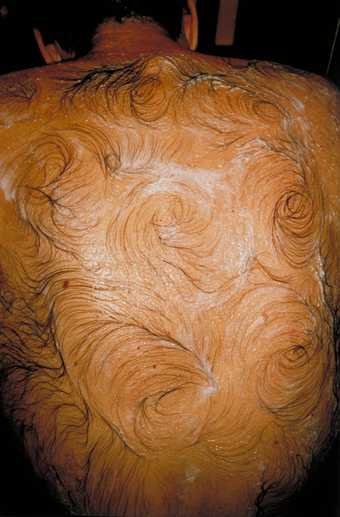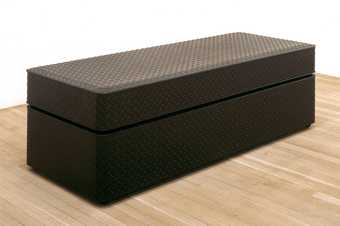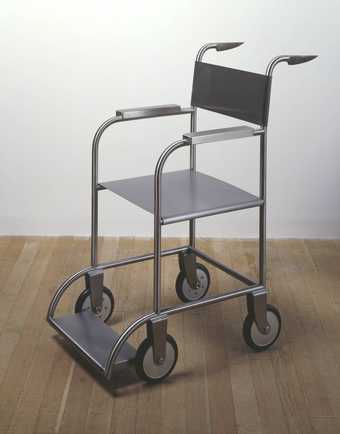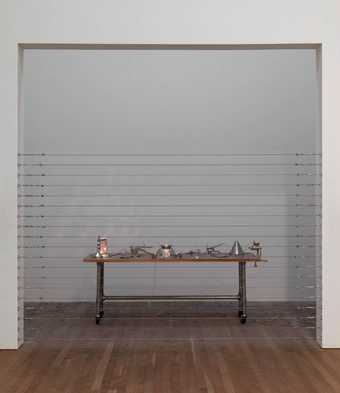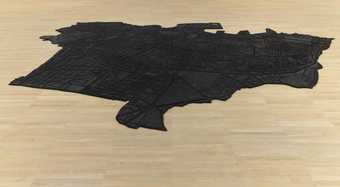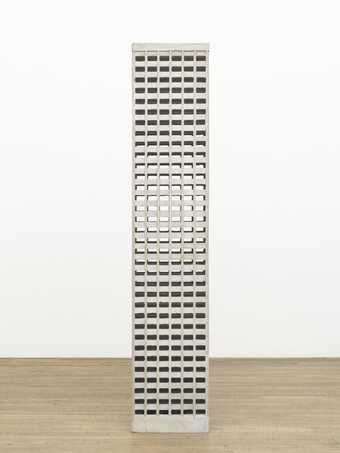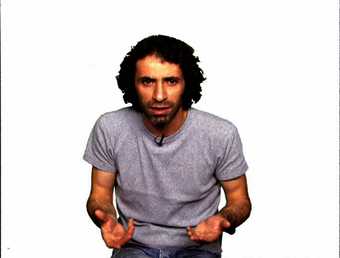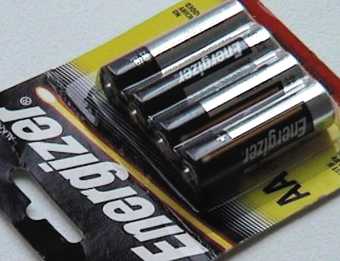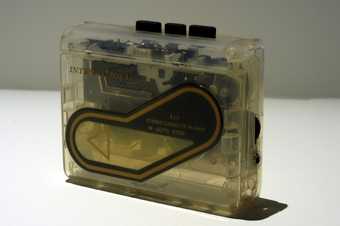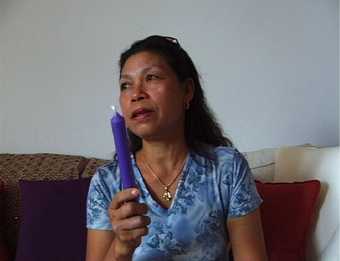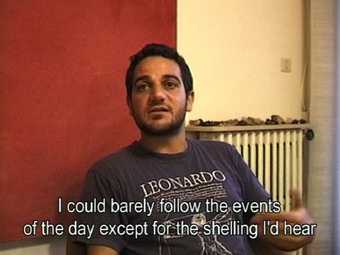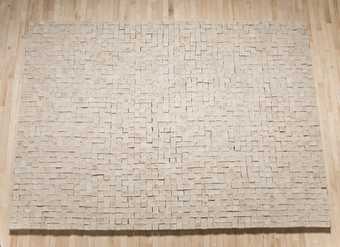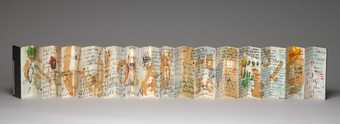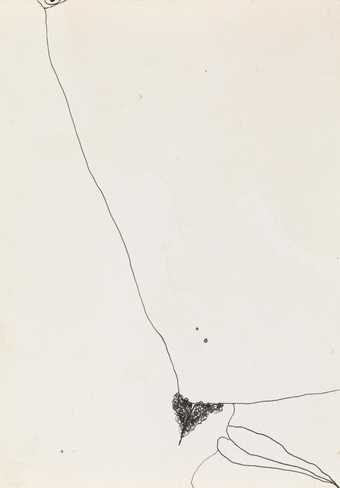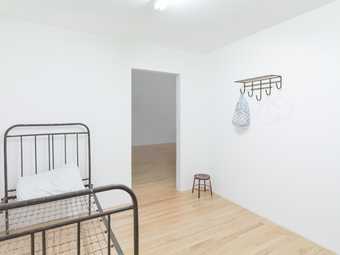In Tate Britain
Prints and Drawings Room
View by appointment- Artist
- Etel Adnan 1925–2021
- Medium
- Ink and watercolour on paper
- Dimensions
- Displayed: 183 × 2743 mm
- Collection
- Tate
- Acquisition
- Presented by the artist 2019
- Reference
- T15246
Summary
Key Signs 2017 is an example of Etel Adnan’s ‘leporello’ works, leporello being a book format with folded concertina-style pages. The work combines washes of watercolour with black ink hieroglyph-like forms. While in her other leporello works, Adnan at times has referred to specific texts, such as the poem Assassination Raga (1968), an ecstatic funeral oration for Senator Robert Kennedy written by the American beat poet Lawrence Ferlinghetti in the earlier Untitled 1970 (Tate T15063), in Key Signs Adnan has developed a visual vocabulary of glyphs that is more explicitly abstract, as the title suggests. She has explained that, for her, ‘Abstract art was the equivalent of poetic expression. I didn’t need to use words, but colours and lines. I didn’t need to belong to a language-oriented culture but to an open form of expression.’ (Etel Adnan, To Write in a Foreign Language, 1996, https://www.epoetry.org/issues/issue1/alltext/esadn.htm, accessed 21 December 2018.) The work bridges textual and visual elements within the practice of an artist whose body of work has combined poetry, painting, collage, tapestry, ceramics and film.
The choice of the leporello format presented Adnan with a dynamic paradox: an expanded space, multiplying its potentialities as the pages unfurl but, when closed, reduced to the symbolic space of a notebook, a metaphor for mobility and aesthetic nomadism (Adnan herself is of Lebanese-Syrian origin but has lived in California since the 1950s). She has recalled: ‘Around 1964, I discovered these Japanese “books” which fold like an accordion, on whose pages the Japanese painters mixed drawings with writings and poems … When I saw that format I thought it was a good way to get out of the page as a square or rectangle; it was like writing a river.’ (Quoted in Obrist 2014, p.45.)
This practice has particular meaning in the Arab context where writing and art often come together. In Adnan’s hands, the pages of the leporello become a visual art medium that condenses a diversity of forms and aesthetics: from the old miniature book, to a modern paper ‘cinema’, where flipping through pages can result in the effect of moving images. Adnan’s mobile landscape of word and image has a multiplicity of references, from calligraphic manuscripts, to road trip-style sketches or notes from a travelogue, to depictions of planets and constellations in the cosmos. The use of leporello is an ongoing feature of Adnan’s practice which, as a whole, bridges poetry, painting, collage, tapestry, ceramics and film. The leporello works have played a key role in Adnan’s exhibition presentations and were featured prominently in her submission to Documenta 13 in 2012, as well as in her retrospective at Mathaf, Doha in 2014 and her exhibition at the Serpentine, London in 2016.
Further reading
Etel Adnan: On Love and the Cost We Are Not Willing to Pay Today: 100 Notes, 100 Thoughts, Documenta series 006, Ostfildern 2011.
Hans Ulrich Obrist, Etel Adnan, In All Her Dimensions, Doha and Milan 2014.
Hans Ulrich Obrist, Etel Adnan: The Weight of the World, exhibition catalogue, Serpentine Gallery, London 2016.
Morad Montazami and Dina Akhmadeeva
December 2018
Does this text contain inaccurate information or language that you feel we should improve or change? We would like to hear from you.
You might like
-
Mona Hatoum Van Gogh’s Back
1995 -
Mona Hatoum Divan Bed
1996 -
Mona Hatoum Untitled (wheelchair)
1998 -
Mona Hatoum Home
1999 -
Marwan Rechmaoui Beirut Caoutchouc
2004–8 -
Marwan Rechmaoui Monument for the Living
2001–8 -
Rabih Mroué On Three Posters
2004 -
Lamia Joreige Objects of War No.1
2000 -
Lamia Joreige Objects of War No.2
2003 -
Lamia Joreige Objects of War No.3
2006 -
Lamia Joreige Objects of War No.4
2006 -
Mona Hatoum Present Tense
1996 -
Etel Adnan Untitled
1970 -
Huguette Caland Flirt X
1972 -
Mona Hatoum Interior/Exterior Landscape
2010


